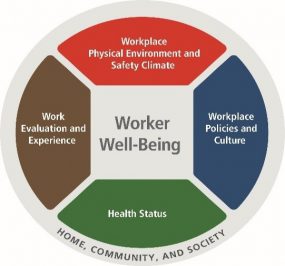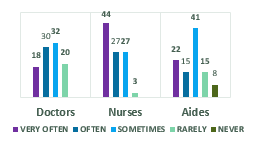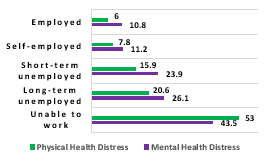Healthy Work Design and Well-Being Program
The National Institute for Occupational Safety and Health (NIOSH) Healthy Work Design and Well-Being (HWD) Program works with partners in industry, labor, trade associations, professional organizations, and academia to accomplish its goals. Current priorities include:
- Improve the organization of work to promote safe and healthy work design and well-being.
- Advance the safety and health of workers in non-standard work arrangements.
- Address negative health and safety consequences of shift work, long work schedules, and other factors that contribute to work-related fatigue.
- Explore the safety and health effects of work organization and non-work factors (including societal, technological, environmental, economic, and political) that influence work organization.
- Identify the economic factors that affect worker safety, health, and well-being.
- Design surveys that track changes in the organization of work and the resulting effects on worker health, safety, and well-being.
- Conduct research on the association between work arrangements and worker stress, health, and health-related quality of life (HRQL).
- Identify cost-effective interventions that organizations can use to reduce the negative impacts of work-related stressors including non-standard work arrangements.
- Promote evidence-based, comprehensive approaches to advance worker well-being, including Total Worker Health® (TWH).
- Edited a special issue on the future of work, TWH, and HWD for the International Journal of Environmental Research and Public Health. It offers a collection of 30 research papers, reviews, commentaries, and an editorial from NIOSH and partner experts.
- Administered the NIOSH Quality of Work Life (QWL) Survey as a module of the General Social Survey (GSS). The QWL is the major source for tracking work organization and quality of work life factors at the national level.
- Published theNIOSH Worker Well-being Questionnaire (WellBQ), a freely available survey instrument that provides an integrated assessment of worker well-being across multiple spheres.
- Published several journal articles (healthy work design and well-being) and a series of blogs (Healthy Work Design | Blogs | CDC) on fatigue, future of work, COVID-19 related worker health, and non-standard work arrangements.
- Co-managed the Work, Stress, and Health 2021 virtual conference. Approximately 650 attendees accessed the on-demand conference across the globe.
- Communicated HWD research and studies through chaired sessions and workshops at the European Academy for Occupational Health Psychology Conference, July 6th-8th, Bordeaux, France.
- Implement objectives from the HWD national occupational research agenda with industry and academic partners.
- Co-host the 3rd International Symposium to Advance Total Worker Health® to be held October 11-14, 2022, at the National Institutes of Health (NIH) headquarters in Bethesda, Maryland.
- Publish special issue on fatigue in the American Journal of Industrial Medicine.
- Guest-edit a special issue on telework for the International Journal of Environmental Research and Public Health.

Mention of any company or product does not constitute endorsement by the National Institute for Occupational Safety and Health, Centers for Disease Control and Prevention
The NIOSH Healthy Work Design and Well-Being Program seeks to improve the design of work, work environments, management practices, and organizational policies to advance worker safety, health, and well-being. This snapshot shows recent accomplishments and upcoming work.

Source: Worker Well-Being Questionnaire (WellBQ) | NIOSH | CDC

Source: GSS General Social Survey | NORC

Source: Silver, Li, Quay (2021)- BRFSS Analysis
To learn more, visit
www.cdc.gov/niosh/programs/hwd
September 2022
